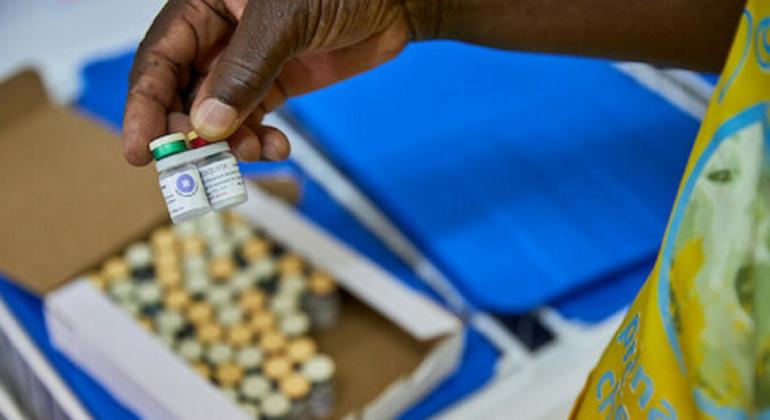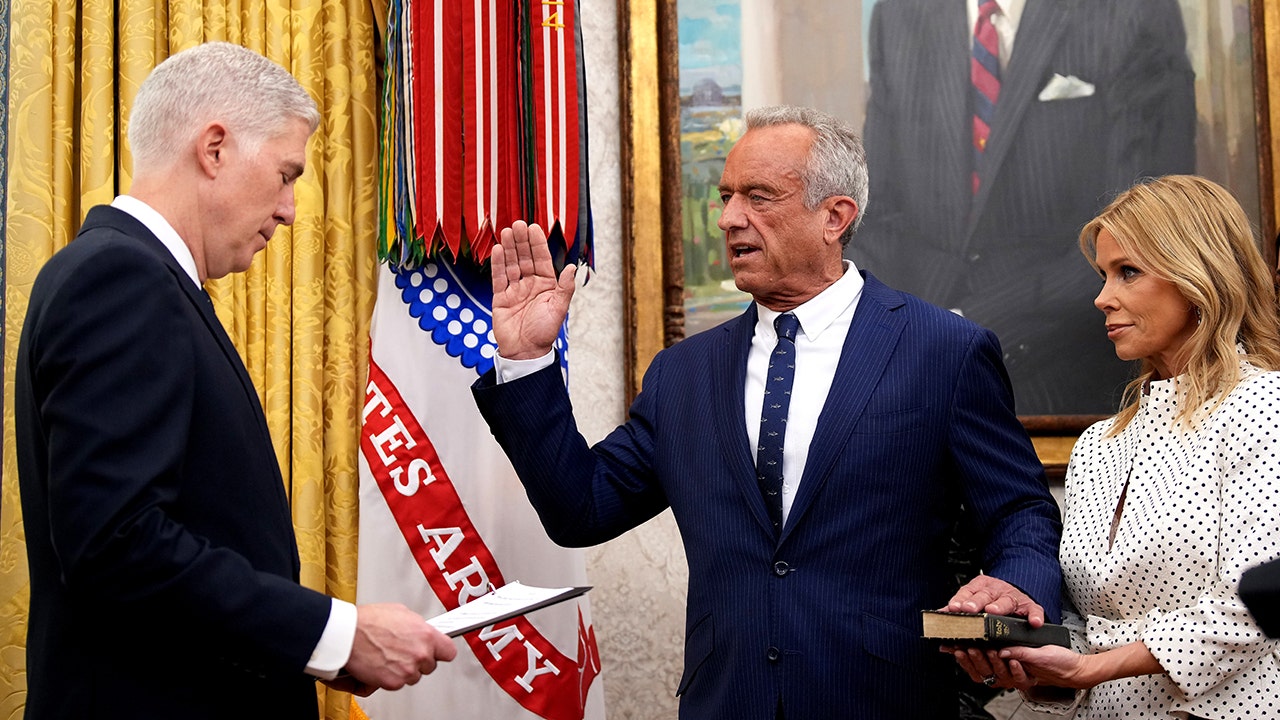A world population fed up with the chaos caused by COVID-19 struggled with a new, highly portable variant earlier this year: Omicron.
omicron and so on
This latest version spread across Europe, resulting in record weekly numbers of cases, although the death toll was relatively small compared to previous outbreaks.
And although many countries have begun to ease lockdowns and other restrictions on movement, the World Health Organization (WHO) indicated that the disease is still a threat: Until August one million COVID-19 Fatalities have been recorded.
At the agency World Health Assembly In May – the first to be held in person since a pre-pandemic in 2019 – WHO chief Tedros Adhanom Ghebreyesus urged countries not to lower their vigilance.
“Is COVID-19 over? No, it’s definitely not over yet. I know this is not the message you want to hear and it is definitely not the message I want to deliver,” he told delegates.
One billion COVAX shots administered
Early in the pandemic, the WHO has consistently pointed out the uneven distribution of vaccines and treatments for COVID-19 and urged more to be done for those living in developing countries: those supported by the United Nations COVAX Facility, a multilateral initiative to ensure equal access to vaccines for all, achieved a important milestone in January, when the billionth stitch was recorded in Rwanda.
COVAX undoubtedly saved many lives, but in March it was Tedros warning that a third of the world’s population has still not received a single dose of the COVID-19 vaccine, including a shocking 83 percent of all Africans.
This lack of justice was still an issue when the WHO reported in November Confirmed that lower-income countries continue to struggle to access essential immunizations demanded by wealthier countries.
“That’s not acceptable to me and shouldn’t be acceptable to anyone,” Tedros said. “If the world’s rich reap the benefits of high vaccination rates, why shouldn’t the world’s poor?” Are some lives worth more than others?”
AIDS eradication goals off course
In 2021 there were 1.5 million new HIV infections and 650,000 AIDS-related deaths. UN member states had demonstrated their commitment to ending the virus by signing an agreement by the end of the decade political statement at the General Assembly in 2021, but this year it was clear that faster action would be needed if this goal is to be achieved.
A July report showed a slowdown in the decline in HIV infections to 3.6 percent between 2020 and 2021, the smallest annual decline in new HIV infections since 2016. The pandemic has spread as COVID-19 and other global crises are straining resources, to the detriment of HIV programs.
On World AIDS Day in November UN chief António Guterres explained that the 2030 target has gotten off track and noted the ongoing discrimination, stigma and exclusion that many people living with HIV still face.
This year saw encouraging developments in drug treatment: in March, the first injection offering long-lasting protection against HIV was rolled out in South Africa and Brazil as an alternative to daily medication.
The WHO recommended the use of the drug cabotegravir, which only needs to be injected six times a year, for people at significant risk of HIV infection. In July, the United Nations reached an agreement with the company that developed the drug to allow cheaper generic formulations to be manufactured in less developed countries, a move that could potentially save many lives.

Ebola hits Democratic Republic of Congo and Uganda
In April were health workers mobilized to combat an outbreak of the deadly Ebola Virus in the Democratic Republic of the Congo (DRC), the sixth recorded outbreak in just four years. “With effective vaccines at hand and the experience of the DRC’s health workers Ebola In response, we can quickly change the course of this outbreak for the better,” said Dr. Matshidiso Moeti, WHO Regional Director for Africa.
There was also an outbreak reported in neighboring Uganda in August after six suspected deaths in central Mubende district, a gold mining region that attracts workers from many parts of Uganda and other countries.
The following month, the WHO scaled Response efforts, delivery of medical supplies, provision of logistics and dispatching of personnel to assist the Ugandan authorities in containing the spread of the virus.
By mid-November there had been 141 cases and 55 deaths Confirmedand the UN health agency said it was working closely with the Ugandan authorities to speed up the development of new vaccines.
Cholera returns to Haiti and threatens the Middle East
As the security situation in Haiti continued to deteriorate, cholera spread unwanted return to the troubled country in October, combined with a rundown sanitation system and lawlessness, making it difficult for those affected to seek treatment.
The situation was made worse by gangs blockading Haiti’s main fuel terminal. This led to a deadly fuel shortage that forced many hospitals and health centers to close and affected water supplies.
The UN Children’s Fund UNICEFstated in November that juveniles make up about 40 percent of cases in Haiti, and appeals for $27.5 million to save lives from the disease.

Haiti was far from the only country hit by the bacterial disease, with an outbreak in the Syrian city of Aleppo in September attributed for people who drink contaminated water from the Euphrates and use contaminated water to irrigate crops, resulting in food contamination. A break out in Lebanon, the first in thirty years, spread across the country in November. The WHO said the situation is fragile as Lebanon faces an ongoing crisis and access to clean water and proper sanitation is limited across the country.
WHO data Approved cases in around 30 countries in December, while fewer than 20 countries had reported infections in the previous five years.
“The situation is quite unprecedented because not only are we seeing more outbreaks, but these outbreaks are larger and deadlier than what we’ve seen in years past,” said Dr. Barboza, WHO team leader for cholera and epidemic diarrheal diseases.
Mr Barboza said that while conflict and mass displacement continue to be major factors in the spread of cholera, the climate crisis is playing a direct role in the growing number of simultaneous outbreaks.

Mpox: a new health emergency
For many people, monkeypox was a previously unfamiliar word to learn in 2022, even though the disease has been linked to human disease since the 1970s. Monkeypox, renamed MPOX by the WHO, occurs mainly in tropical rainforest areas in central and west Africa, but outbreaks have emerged in other parts of the world this year.
In May, the WHO sought appeasement Issue that the outbreak would be similar to the COVID-19 pandemic, noting that most infected people recover within a few weeks without treatment.
However, as global cases increase, the WHO explained In July, this MPox was classified as a “Global Health Emergency of International Concern.” Tedros stressed that because the virus is focused on men who have sex with men, especially those with multiple sex partners, the outbreak can be stopped “with the right strategies in the right groups.”
A senior WHO official noted in August that the international community only became interested in MPOX as infections began to rise in developed countries.
Deputy Director General for Emergencies Ibrahima Soce, said in August that “we have been working on mpox in Africa for several years, but nobody was interested”.
Late November WHO announced that they would henceforth refer to monkeypox as mpox, citing reports of racist and stigmatizing language surrounding the disease’s name.
By December, more than 80,000 cases had been reported in 110 countries, with 55 deaths.

Major Malaria Breakthrough
Hopes for an end to malaria were raised Augustwhen UNICEF announced that pharmaceutical giant GSK had been awarded a $170 million contract to manufacture the world’s first malaria vaccine.
Malaria remains one of the leading killers of children under the age of five: in 2020, almost half a million boys and girls died from the disease in Africa alone, a rate of one death every minute.
“This is a huge step forward in our collective effort to save children’s lives and reduce the burden of malaria through comprehensive malaria prevention and control programs,” said Etleva Kadilli, UNICEF Director of Services.
Plans are already in place to increase production, including through technology transfer, UNICEF added, “so that one day every vulnerable child will have the opportunity to be vaccinated against this deadly disease.”





